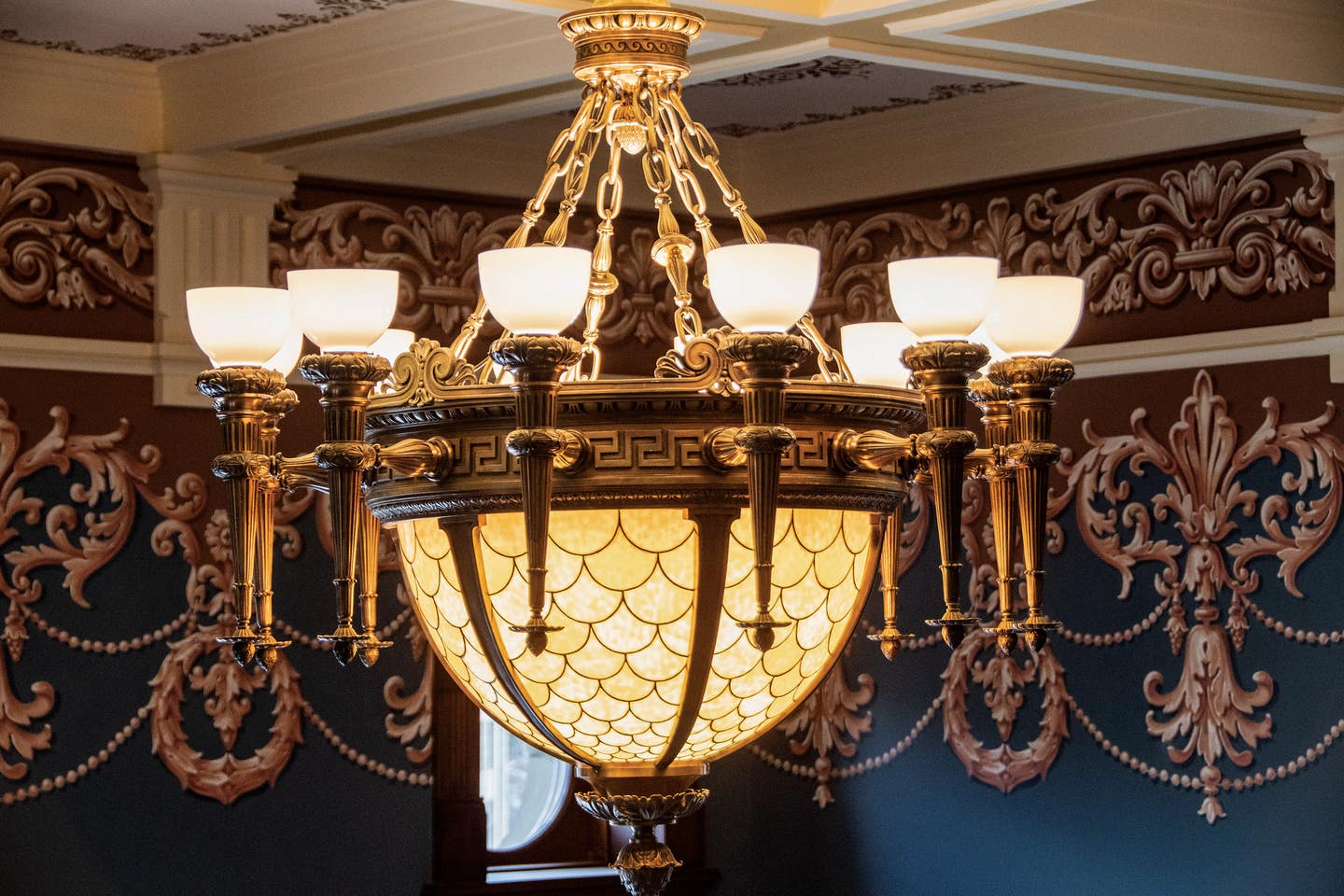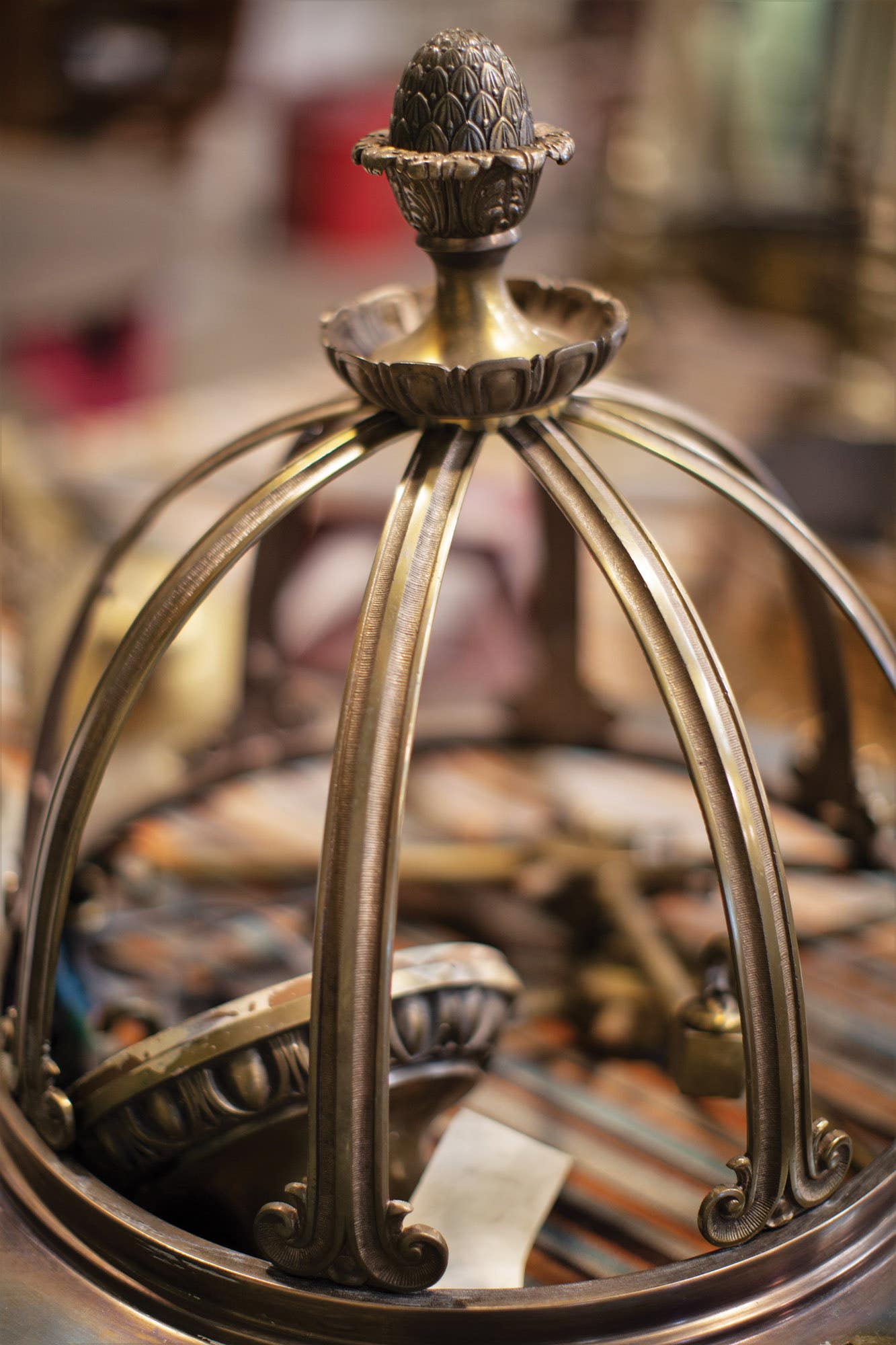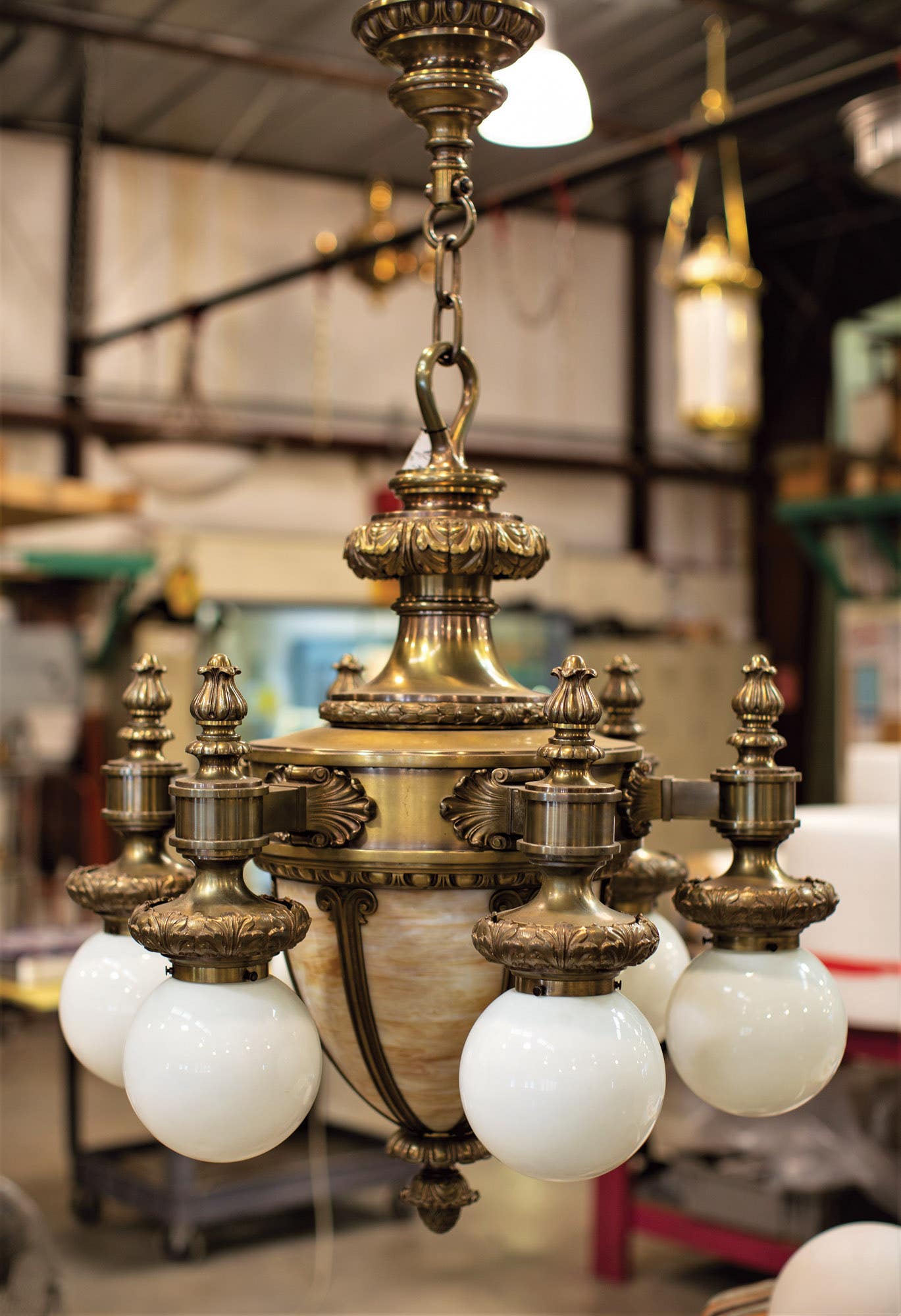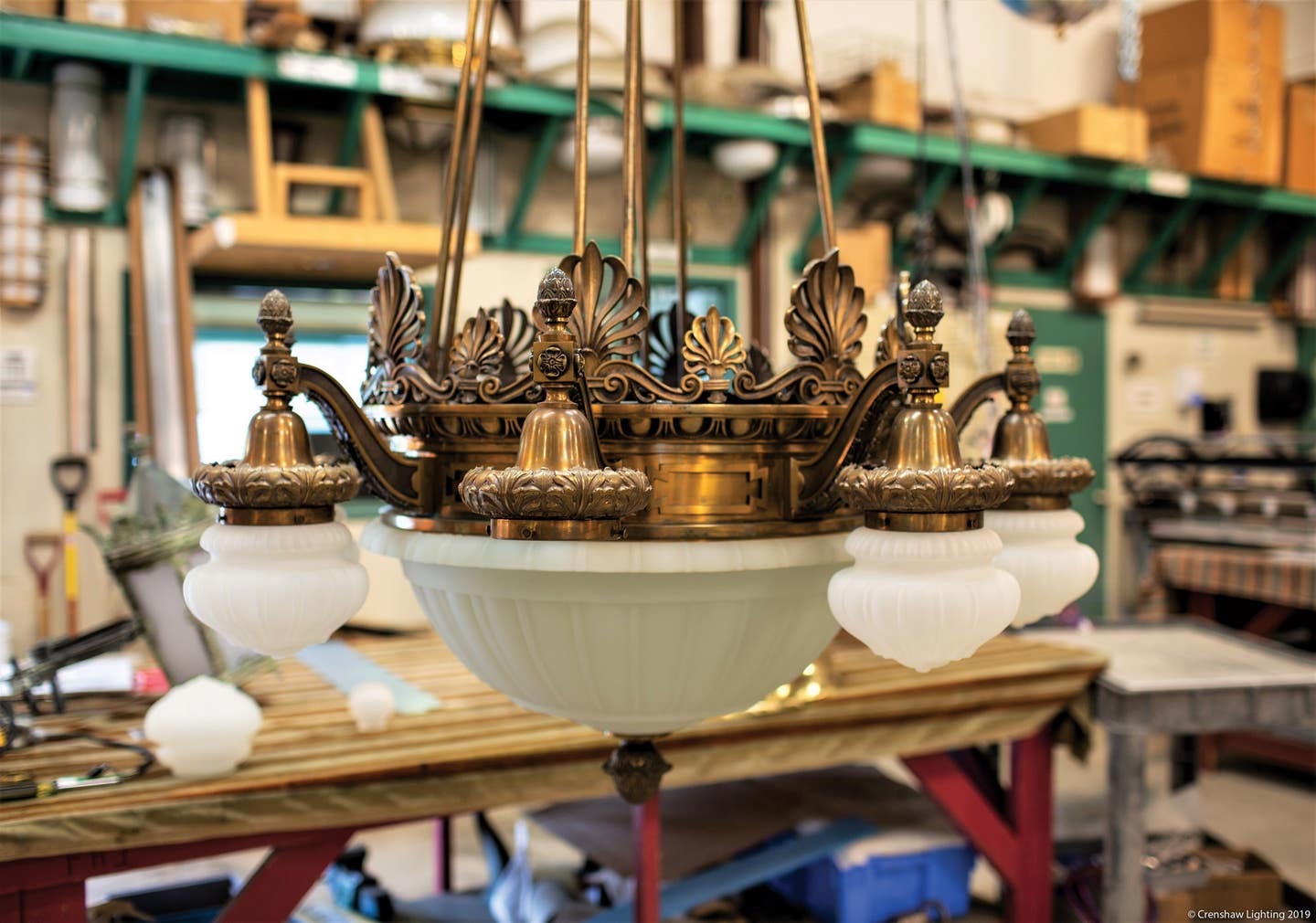
Restoration & Renovation
Historic Lighting Restoration Brightens Wyoming Capitol
Upgrading historic lighting can present a paradox. How best to boost performance to the latest standards for light output and energy efficiency while keeping fixture design unchanged from decades ago? It’s been going on a long time—gasoliers got wired soon after electricity became the dominant illuminant—and the rehabilitation and restoration of the 1888 Wyoming State Capitol offers a contemporary
case in point.
Completed in 2019, the extensive $300 million project included renovating nearly 800 light fixtures by Crenshaw Lighting of Floyd, Virginia. “Over the years we’ve worked on the Virginia and Minnesota State Capitols,” says chief executive officer Patrick Daley, “but all of them had other types of lighting applications. For this state house to be entirely modernized with solid-state LEDs really exemplifies what that technology can accomplish in a historic envelope.”
It wasn’t long ago that upgrading historic lighting meant trying to pack compact fluorescent lamps and their components into 100-year-old fixtures. “We’ve come a long way from those days,” says Daley, noting that their work was not simply retrofitting incandescent sockets either. He adds that excellent partners‚ J.E. Dunn Construction, construction manager, and Gary Steffy Lighting Design, lighting designer‚ were vital. “The big challenge in a project like this is raising light levels in a space to modern standards, without changing the number of fixtures or the aesthetics of the existing fixtures—or creating a ‘glare bomb’”.
First widely seen in the 1970s as the dimly glowing ruby displays of indicator lamps and digital clocks, light emitting diodes (LEDs) have grown exponentially in the last few years. Basically, a two-terminal semiconductor that emits light when carrying current, LEDs were at first restricted to the color red and had limited light output—one might say you sometimes needed a light to see them.
By the 2000s, however, advances in diode types and coatings improved the range of possible colors as well as their light output. Most recently, chip-on-board (COB) technology has allowed manufacturers to mount multiple LEDS (nine or more) to a single substrate, typically a plastic or metal circuit board, to comprise an individual module. When these modules are built to a specific application, they are often called solid-state LEDS.
Compared to separately mounted LEDS, a COB LED module carries more light sources in the same or less space with the advantage of looking more like a single light source and with more output per square inch. This leads to efficiency on several levels, explains Kevin Page, design engineer at Crenshaw. “Typically, if you’re comparing a COB LED to a conventional incandescent socket, your overall diameter is about the same, but your height completely goes away. COBs are less than 1/8 of an inch tall, but they’re about nine to 12 times as bright.” What’s more, that increase in output does not come at the expense of energy. “On this project, we’re running in the realm of 160 to 220 lumens (a measure of light) per watt, depending upon the fixture. By comparison a standard incandescent fixture runs about 10 to 15 lumens per watt.”




Page adds that, as far as output, the Wyoming State Capitol fixtures are all right on the leading edge of what can be done. Explains Daley, “Kevin made estimates about where we started—a benchmark of probably 1 foot-candle (one lumen per square foot of light intensity)—and now we have a lower limit of 30 foot-candles. Plus, there are spaces that need even more for television so there are a lot of applications that come into it.”
What’s more, if maximum light output is not desired, the technology is dimmable. “The standard we used for this project is 5 percent dimming,” says Page. “Some fixtures are less than that, even 1 percent, but every fixture was at least 5 percent.” Daley points out that COB technology allows far greater control than other technologies, and features like dimming and color tuning are far easier to accomplish. “Some people worry about flicker,” adds Page, “but it’s all flicker free.”
All sounds perfect for retrofitting historic fixtures but, as ever, there’s the real world to deal with. “The big issue that comes with putting in these COB LEDs is they’re so much more efficient but, because they also have much lower maximum running temperatures, you have to keep them a lot cooler.” This requires modifications in the fixture, he explains, “such as adding aluminum heat sinks (heat exchangers) so that the LEDS operate at an acceptable temperature.
One of the other big benefits of COB says Daley is the potential for remote access to the drivers (power supplies). “For instance, instead of a maintenance person having to climb up to the fixture, in some cases we are able to set it up so that they can go to a closet and change out a driver without ever having to get on a lift.”
“Part of the reason we’re capable of results so close to the leading edge of technology is we have a lab at our facilities where we can get in components, test them, then go back to the design team about reasonable operating ranges for the technology,” says Daley. At Crenshaw, however, that approach is not just for new technology. For instance, a large scope of the work in the Wyoming Capitol project was reproducing complex pieces of cast glass. “Since that’s not a very common product anymore, we actually have our own glass studio in-house.” He says generally the goal of a project is to restore a fixture to as close to original as possible. “We’ll research and identify what is was, and the methodology in its construction, then we’ll fabricate a replication in a method similar to what they would have had originally.”
Going back to lighting upgrades, Daley recalls with amusement a discussion several years back about using solid-state LEDS in historical applications. “A bunch of my colleagues noted that they didn’t think LED was ready for prime time yet.” On the contrary, the technology has clearly opened up a bright new future.
Gordon H. Bock is an architectural historian, instructor with the National Preservation Institute, and speaker through www.gordonbock.com.








